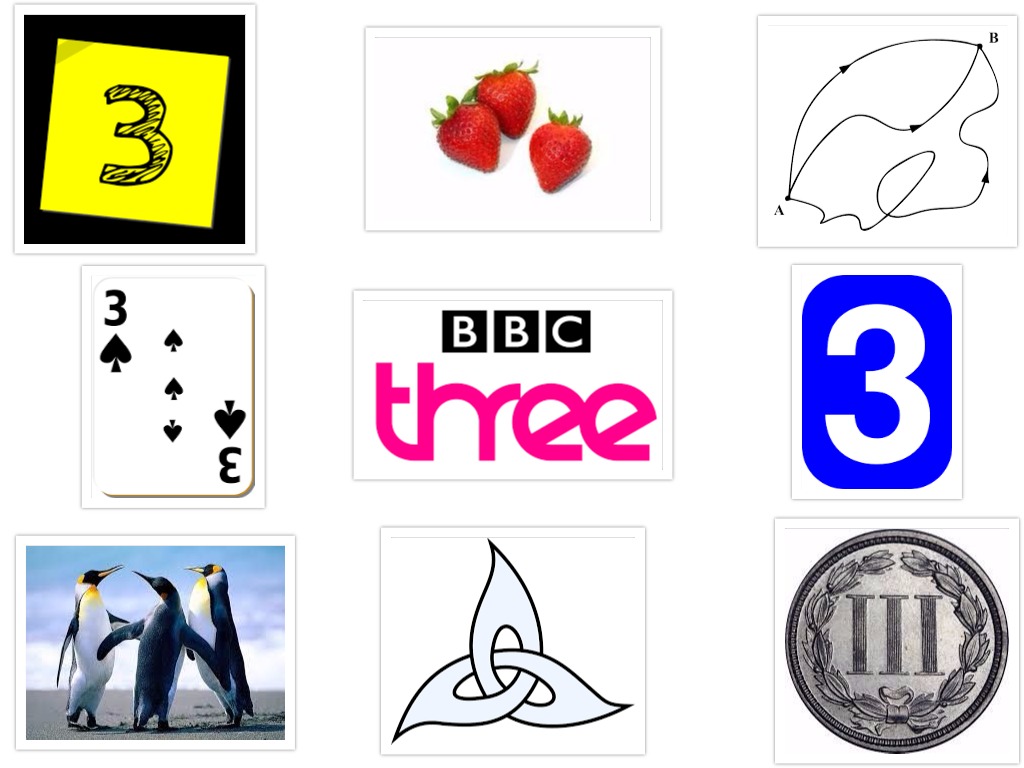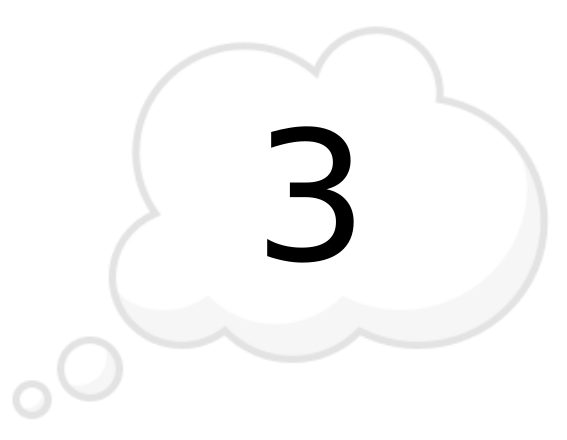The obvious answer is “quite a lot”. There’s the three on the front of my house, there are a couple more in my phone number and there’s one on the number plate of the car across the street from me right now. There are also several copies of my house number three, stored in the databases of various shopping sites who have been kind enough to deliver goodies to my home address over the years. Ditto for my phone number threes; and the DVLA, police ANPR, and several insurance companies presumably have copies of the three on my neighbour’s car number plate.
Now in some ways these threes are very different from each other – my neighbour’s car has little to do with my phone. And neither of these have very much at all to do with that group of three wildebeest over yonder on the African savannah. And yet, in some ways, some of them are very similar – the pair of threes in my phone number, for example, share quite a lot of context and, other than their position in the string of digits, you’d be hard pressed to distinguish one from the other.
You’ll notice though that I’ve not used the digit ‘3’ anywhere in the discussion so far. And yet that’s what’s encoded in Amazon’s database, even though my house is adorned with the word ‘three’ on a little piece of green Lakeland slate. If I happened to live in certain parts of Canada or in France, I might have the word ‘trois’ in place of the word ‘three’.
So, not only are there many different threes, there are also many different representations of the same three. What they all have in common though is some notion of ‘threeness’. All threes are clearly distinct from all fours, fives and 3.14159s. That’s what it means to be three. We can take this platonic idea of three and call it the master three.
If we only have one master three then it makes sense that all the other threes we have, the real-world threes rather than the platonic, idealised, ‘perfect’ three, can really just refer to the master three to get their threeness characteristic. In fact they probably should do that so that we’re not duplicating information needlessly, and potentially having conflicting ideas of threeness. Threeness is threeness and it only needs to be defined in one place.
All the other bits and pieces of information related to the real-world threes are specific to to those threes rather than having anything to do with the general idea of threeness. The encoding format of the bit pattern on my phone’s SIM card, the font and colour of the numberplate, the origin of the stone used to make my house number. None of these things help us understand the threeness of these threes.
This idea of a separation of concerns is at the heart of referential semantics. But, apart from the very real benefit of letting me express clearly what I mean, what does it allow me to do in practice? Well, as we’ve seen, I can refer to the threeness attribute of the master three from my own threes, maintaining a strong and secure threeness without risk of corrupting it and crucially, from a practical standpoint, without incurring any extra storage or processing costs.
The following all look very different but they all represent the same value; $3$. Whether or not you would call them equal or not though depends on exactly how you’re using or defining the word ‘equal’.

It makes sense to think of there being only one so-called ‘platonic’ or perfect, idealised three, a kind of abstract idea of three, with the threes we see or use in day to day life being just copies of it.
